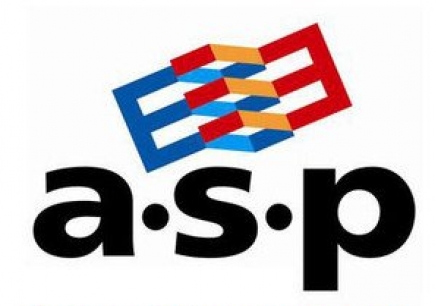10 recommended articles about Repeater control
How to implement the same editing, updating, and deleting functions as the GridView control in the Repeater control? The following is an example written under vs.net2008 (C#). from admin10000.com Backend .cs code protected void Page_Load(object sender, EventArgs e) { if (!Page.IsPostBack) { BindGrid(); } } private void BindGrid() {
1. 10 recommended articles about gridview

##Introduction: How to implement the same editing, updating, and deleting functions as the GridView control in the Repeater control? The following is an example written under vs.net2008 (C#). From admin10000.com background .cs code protected void Page_Load(object sender, EventArgs e){ &nbs...
##2..NET Detailed code explanation for using repeater to achieve paging effect
 ##Introduction: The Repeater control is a data binding A custom container control that can generate a list of individual items and use templates to define the layout of each item on a web page. This article introduces this in detail, let’s take a look at it with the editor
##Introduction: The Repeater control is a data binding A custom container control that can generate a list of individual items and use templates to define the layout of each item on a web page. This article introduces this in detail, let’s take a look at it with the editor
3.
Detailed code explanation of repeater and paging effects (ASP) Introduction: The Repeater control is a data binding container control that can generate a list of each item and can use templates to define web pages The layout of each item. This article introduces this in detail, let’s take a look at it with the editor
Introduction: The Repeater control is a data binding container control that can generate a list of each item and can use templates to define web pages The layout of each item. This article introduces this in detail, let’s take a look at it with the editor
4.
Repeater control implements editing, updating, and deleting operations Introduction: How to implement the same editing, updating, and deleting functions as the GridView control in the Repeater control? The following is an example written under vs.net2008 (C#). From admin10000.com
Introduction: How to implement the same editing, updating, and deleting functions as the GridView control in the Repeater control? The following is an example written under vs.net2008 (C#). From admin10000.com
5.
.NET implements Repeater control + AspNetPager control paging Introduction: This article shares two examples with you to demonstrate the most basic functions of AspNetPager and help you understand the AspNetPager paging control and its working principle. Friends in need can refer to
Introduction: This article shares two examples with you to demonstrate the most basic functions of AspNetPager and help you understand the AspNetPager paging control and its working principle. Friends in need can refer to
6. Introduction to repeater and paging effect in
.NET Introduction: The Repeater control is a data binding container control that can generate a list of each item and can use templates to define the layout of each item on the web page. This article introduces this in detail, let’s take a look with the editor below
Introduction: The Repeater control is a data binding container control that can generate a list of each item and can use templates to define the layout of each item on the web page. This article introduces this in detail, let’s take a look with the editor below
7.
Repeater aspnet Repeater control description and detailed introduction and usageIntroduction: repeater:repeater aspnet Repeater control description and detailed introduction and usage: The Repeater control does not have built-in rendering capabilities, which means that the user must provide a layout for the Repeater control by creating a template. When the page runs, the Repeater control steps through the records in the data source, rendering an item for each record. It is very simple and not powerful enough to use, but as the old saying goes, you can’t kill a chicken with a bull’s knife. If you don’t use a bull’s knife, what’s the point? Can’t we bite the chicken to death? And we often face this problem in daily applications. Suppose we display complex data, we can use gridview, and generally use Dat
for complex data.
8. Instructions and detailed introduction and usage of asp.net Repeater control_PHP tutorial
Introduction: asp.net Repeater control Instructions and detailed introduction and usage. The Repeater control does not have built-in rendering capabilities, which means that the user must provide a layout for the Repeater control by creating a template. When the page runs, the Repeater control passes through the data source in sequence
9. asp.net Repeater control description and detailed introduction and usage
Introduction: Description, detailed introduction and usage of asp.net Repeater control. The Repeater control does not have built-in rendering capabilities, which means that the user must provide a layout for the Repeater control by creating a template. When the page runs, the Repeater control sequentially passes through the
10. asp.net Repeater control description and detailed introduction and usage_PHP
Introduction: The Repeater control is a container control in the Web server control that allows you to create a custom list from any available data on the page.
The above is the detailed content of 10 recommended articles about Repeater control. For more information, please follow other related articles on the PHP Chinese website!

Hot AI Tools

Undresser.AI Undress
AI-powered app for creating realistic nude photos

AI Clothes Remover
Online AI tool for removing clothes from photos.

Undress AI Tool
Undress images for free

Clothoff.io
AI clothes remover

AI Hentai Generator
Generate AI Hentai for free.

Hot Article

Hot Tools

Notepad++7.3.1
Easy-to-use and free code editor

SublimeText3 Chinese version
Chinese version, very easy to use

Zend Studio 13.0.1
Powerful PHP integrated development environment

Dreamweaver CS6
Visual web development tools

SublimeText3 Mac version
God-level code editing software (SublimeText3)

Hot Topics
 1377
1377
 52
52
 How to handle special characters in C language
Apr 03, 2025 pm 03:18 PM
How to handle special characters in C language
Apr 03, 2025 pm 03:18 PM
In C language, special characters are processed through escape sequences, such as: \n represents line breaks. \t means tab character. Use escape sequences or character constants to represent special characters, such as char c = '\n'. Note that the backslash needs to be escaped twice. Different platforms and compilers may have different escape sequences, please consult the documentation.
 How to use various symbols in C language
Apr 03, 2025 pm 04:48 PM
How to use various symbols in C language
Apr 03, 2025 pm 04:48 PM
The usage methods of symbols in C language cover arithmetic, assignment, conditions, logic, bit operators, etc. Arithmetic operators are used for basic mathematical operations, assignment operators are used for assignment and addition, subtraction, multiplication and division assignment, condition operators are used for different operations according to conditions, logical operators are used for logical operations, bit operators are used for bit-level operations, and special constants are used to represent null pointers, end-of-file markers, and non-numeric values.
 What is the role of char in C strings
Apr 03, 2025 pm 03:15 PM
What is the role of char in C strings
Apr 03, 2025 pm 03:15 PM
In C, the char type is used in strings: 1. Store a single character; 2. Use an array to represent a string and end with a null terminator; 3. Operate through a string operation function; 4. Read or output a string from the keyboard.
 The difference between multithreading and asynchronous c#
Apr 03, 2025 pm 02:57 PM
The difference between multithreading and asynchronous c#
Apr 03, 2025 pm 02:57 PM
The difference between multithreading and asynchronous is that multithreading executes multiple threads at the same time, while asynchronously performs operations without blocking the current thread. Multithreading is used for compute-intensive tasks, while asynchronously is used for user interaction. The advantage of multi-threading is to improve computing performance, while the advantage of asynchronous is to not block UI threads. Choosing multithreading or asynchronous depends on the nature of the task: Computation-intensive tasks use multithreading, tasks that interact with external resources and need to keep UI responsiveness use asynchronous.
 How to convert char in C language
Apr 03, 2025 pm 03:21 PM
How to convert char in C language
Apr 03, 2025 pm 03:21 PM
In C language, char type conversion can be directly converted to another type by: casting: using casting characters. Automatic type conversion: When one type of data can accommodate another type of value, the compiler automatically converts it.
 How to use char array in C language
Apr 03, 2025 pm 03:24 PM
How to use char array in C language
Apr 03, 2025 pm 03:24 PM
The char array stores character sequences in C language and is declared as char array_name[size]. The access element is passed through the subscript operator, and the element ends with the null terminator '\0', which represents the end point of the string. The C language provides a variety of string manipulation functions, such as strlen(), strcpy(), strcat() and strcmp().
 The difference between char and wchar_t in C language
Apr 03, 2025 pm 03:09 PM
The difference between char and wchar_t in C language
Apr 03, 2025 pm 03:09 PM
In C language, the main difference between char and wchar_t is character encoding: char uses ASCII or extends ASCII, wchar_t uses Unicode; char takes up 1-2 bytes, wchar_t takes up 2-4 bytes; char is suitable for English text, wchar_t is suitable for multilingual text; char is widely supported, wchar_t depends on whether the compiler and operating system support Unicode; char is limited in character range, wchar_t has a larger character range, and special functions are used for arithmetic operations.
 What is the function of C language sum?
Apr 03, 2025 pm 02:21 PM
What is the function of C language sum?
Apr 03, 2025 pm 02:21 PM
There is no built-in sum function in C language, so it needs to be written by yourself. Sum can be achieved by traversing the array and accumulating elements: Loop version: Sum is calculated using for loop and array length. Pointer version: Use pointers to point to array elements, and efficient summing is achieved through self-increment pointers. Dynamically allocate array version: Dynamically allocate arrays and manage memory yourself, ensuring that allocated memory is freed to prevent memory leaks.




